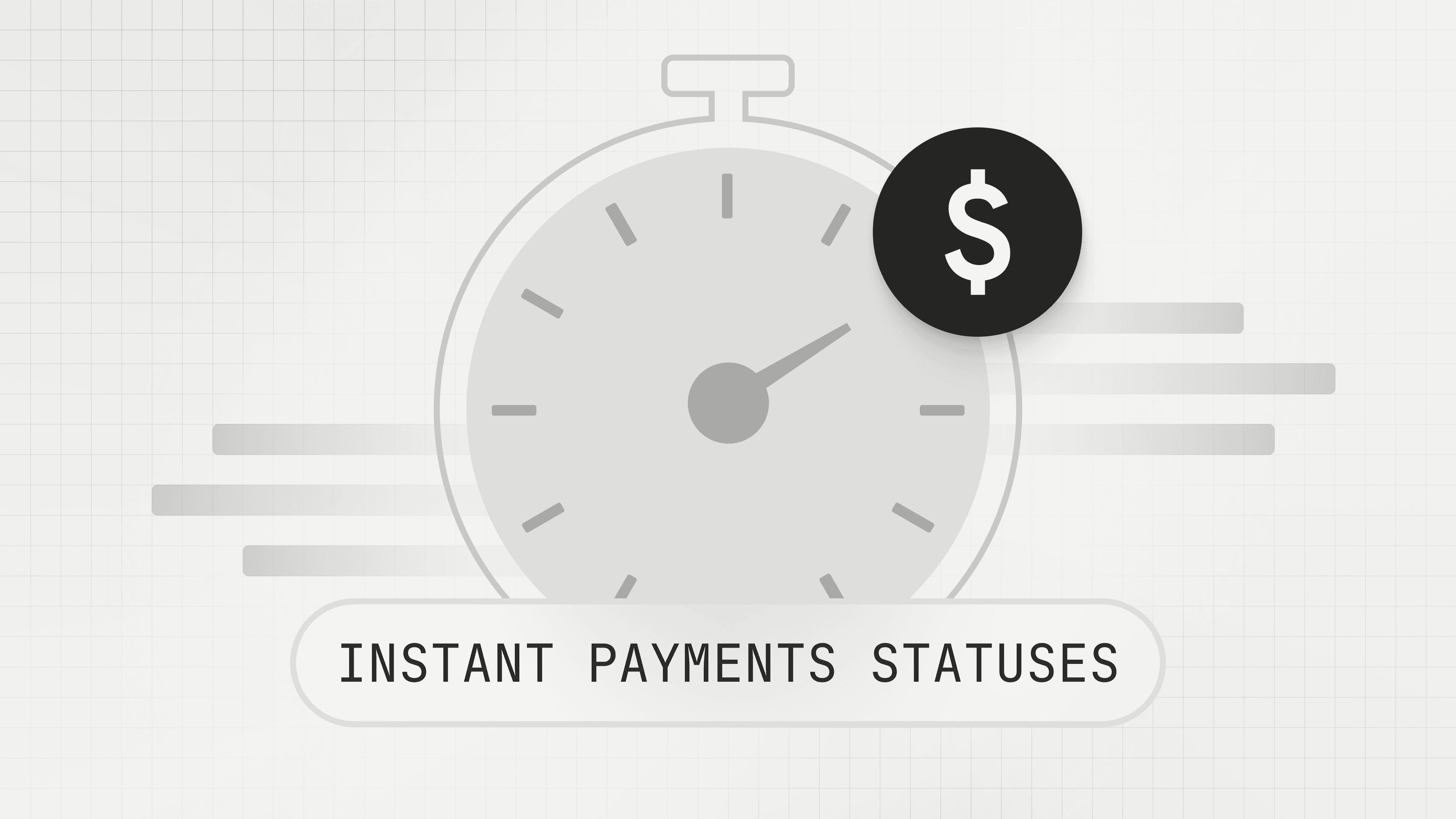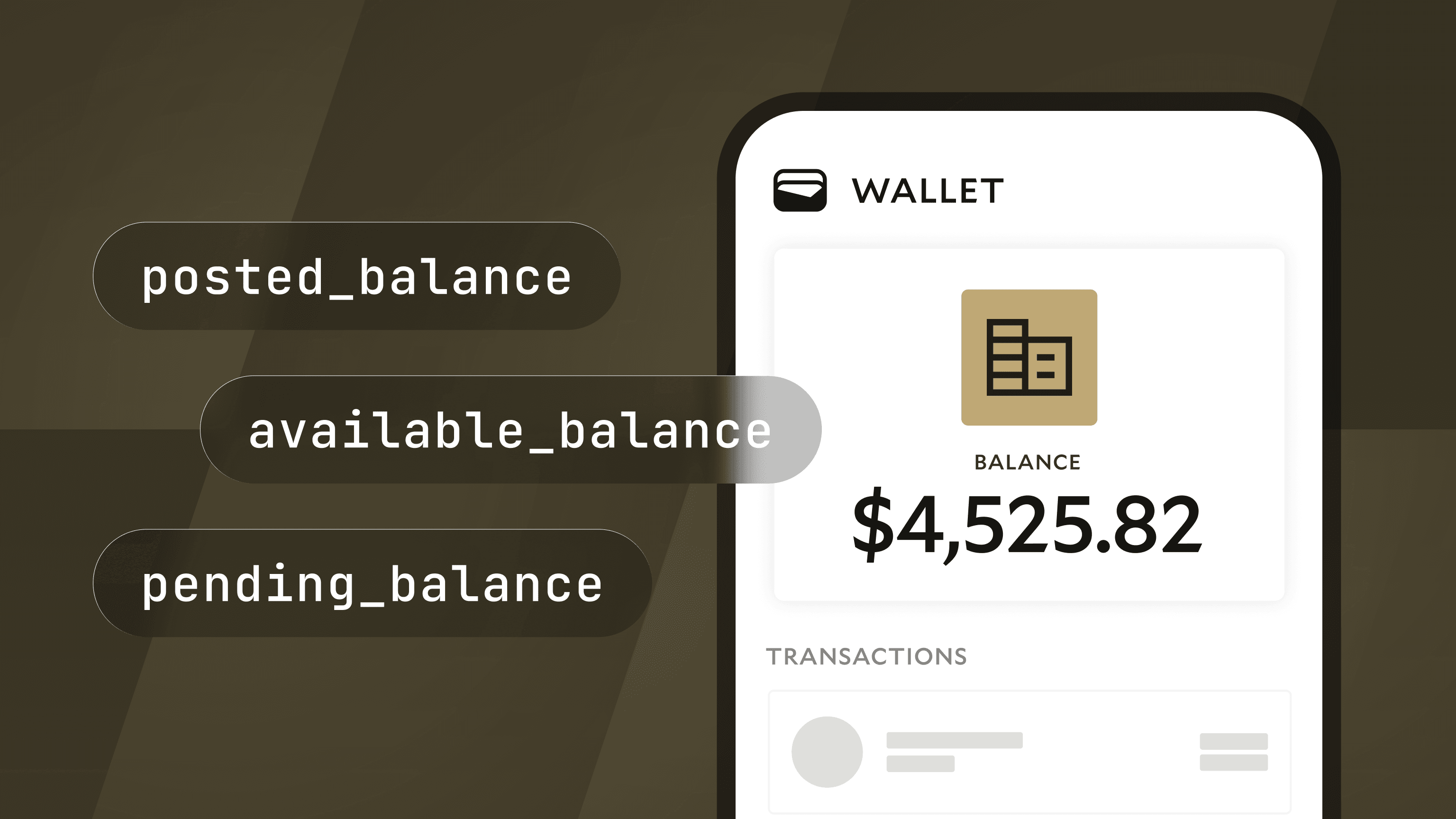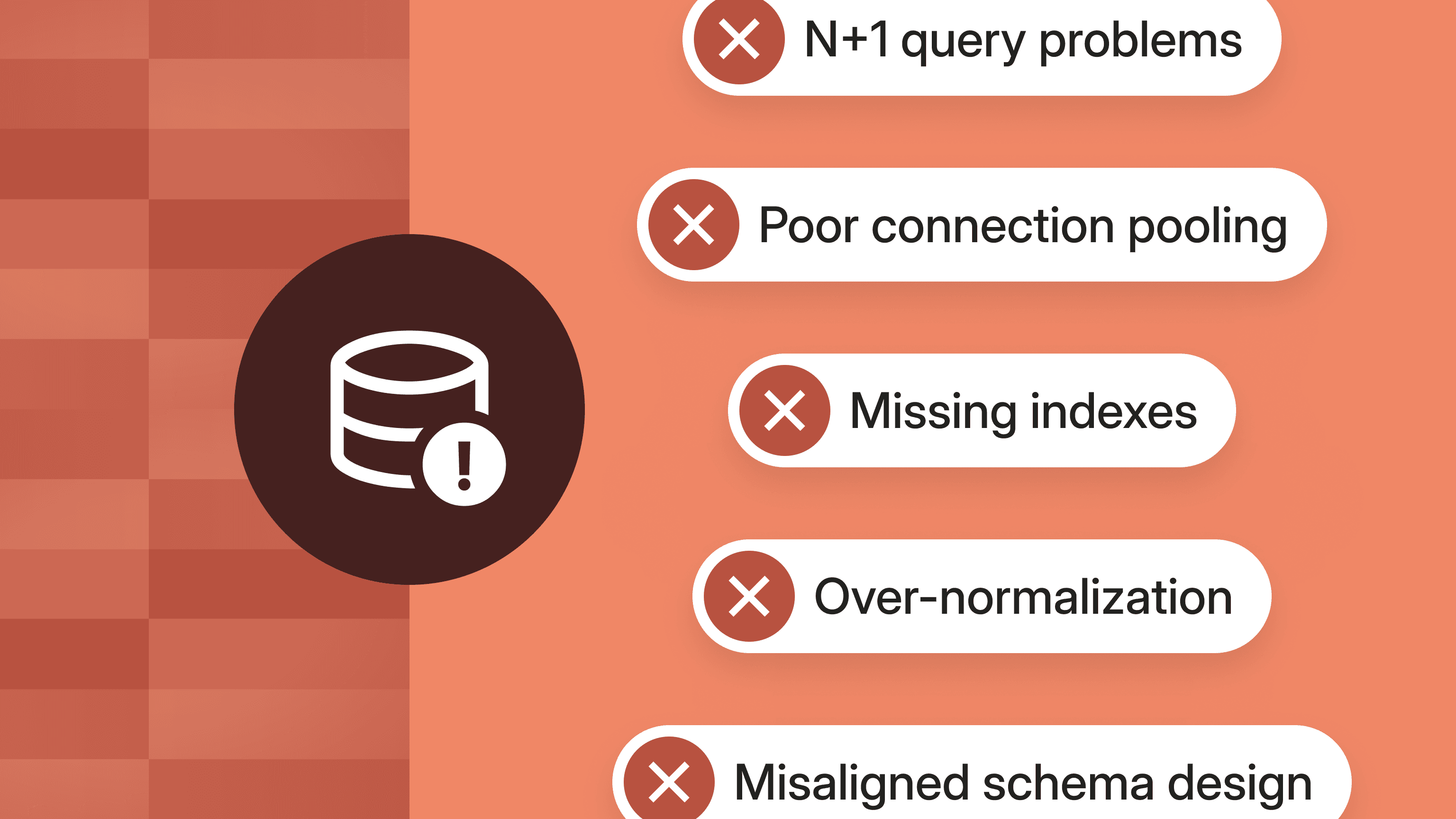The CFO's Guide to Banking APIs
In this journal, find out how banking APIs are powering the future of fintech, and how companies can use them to embed financial services into their products and unlock new growth.

The modern digital world is largely built on APIs, or application programming interfaces. APIs are everywhere: they’re the backbone of today’s vast digital universe.
In the world of finance, APIs have become the linchpins of innovation, driving a sea change across the industry that has benefited consumers, companies and financial institutions (FIs) alike. They’re what allow you to set up automatic bill payments, send money to a friend for your share of a group dinner, shop online, and pay for coffee with your phone. And the world of banking is rapidly adopting APIs to create new products and drive growth. In short, banking APIs are the future of banking.
What is an API?
If you’re not familiar with APIs, Technically wrote a great primer, “APIs for the Rest of Us,” which was one of our Top Reads of 2021.
At its most basic level, an API is a way for two or more applications, programs or digital services to communicate with one another through a request and response process. It’s kind of like what happens in a coffee shop: you request a coffee from the cashier, who conveys that order to the barista, who makes your coffee, which is then delivered to you.
APIs follow a similar linear process: one program sends a request to another program and receives an answer, data, or functionality. They enable the exchange of data between software applications. Where a user interface (UI) application facilitates interaction with an end user, an application programming interface (API) facilitates interaction with other software applications. They are typically complemented by extensive documentation of parameters and operations so programmers can implement and test this interaction.
What are Banking APIs?
In the world of banking, APIs are bits of code that allow FIs to communicate with one another and external companies to exchange data. With banking APIs, companies can embed financial services into their products. These products use the request and response process described above, for example:
- Digital wallets securely store credit card information, then use an API to send encrypted data when the receiving business or consumer requests payment.
- Invoice factoring, which advances cash against issued invoices, thus prepaying the funds that customers have promised to pay in 30, 60 or 90 days.
- Insurance disbursements paid out through new digital payment methods faster, instead of waiting for a physical payment.
In each system, a banking API allows numerous entities, applications or services to communicate with one another and share data in a highly efficient and secure way.
There are generally three types of banking APIs:
- Private: The internal APIs of a bank or FI, which are only used for information sharing within the closed ecosystem.
- Partner: APIs that are accessible to the bank or FI’s business partners.
- Public: Also called “open APIs,” these can be used by third parties without requiring them to be partners; these interfaces are still highly secure as access rights are typically limited.

APIs in financial services are quickly making the industry more open and connected. Indeed, “open banking” is the idea that FIs make their data accessible to third parties. This allows other banks, fintechs, and developers to create new apps and services that rely on that data. These new apps benefit customers by making transactions faster, allowing new forms of payments and business models, or enabling stronger understanding of their financial situation.
The Growth of APIs in Banking
A 2020 study highlights the growth and importance of banking APIs. At the time, only 5% of banking APIs were public and available for use by external developers. But the study also showed that banks expected to triple their number of public APIs in just five years. Banks also said that by 2025 they planned to double their number of external banking APIs that integrate with business partners, and also double their number of internal banking APIs used for internal purposes.
While some institutions remain reluctant to share data with outsiders, 75% of the top 100 banks have public APIs. And the percentage of banks and credit unions grew from 35% in 2019 to 47% in 2021, with an additional 25% planning on investing or developing their own APIs in 2022. They're being used for a variety of projects, including to share best practices, monitor customer sentiment, and develop new financial solutions that allow customers to create budgets and forecasts.
Accelerating Innovation
Banking APIs also provide a secure way to work with financial data in ways that comply with industry regulations. As such, they offer countless opportunities for companies wanting to innovate and provide new digital financial services.
Banking APIs speed up the development and implementation of new banking products and services by allowing each actor to focus on their own area of interest and expertise. In our coffee shop example, this means that a cashier focuses on getting orders into the system, while the barista whips up drinks, and the manager ensures team and shop efficiency. Similarly, banking APIs allow developers, banks, and fintechs each to focus on their area of expertise and to collaborate on creating products that help to grow audiences for everyone.
APIs Make Banks and Fintechs Better Together
The APIs created by fintechs can help banks develop new services and products for customers. And instead of becoming FIs themselves, which would require careful compliance with regulatory bodies such as the Federal Reserve Board, fintechs can securely access data and information from banks through APIs.
The global fintech market was estimated at $111 billion in 2020 and is expected to reach $700 billion by 2030. This level of growth is only possible through partnership: allowing fintech companies to innovate and develop new products and services, and banks maintaining accreditation and compliance, giving them the stability to grow and maintain a strong customer base.
The collaboration facilitated by APIs is a win for mutual customers since they can benefit directly from new services created by fintechs. It’s a win for banks, who can offer their customers the perks and connectivity of the most innovative, up-to-date apps and services on the market. And it’s a win for fintech companies, which can focus on creating new financial solutions and access a large customer base. Win-win-win.
Taking Advantage of the Potential of Banking APIs
Companies looking to begin with banking APIs can start with an analysis that can uncover where they can benefit from apps and services that could be accessed through an API. Financial institutions can identify gaps in services or unmet customer needs and expectations, and then use that information to secure the right fintech partner. Fintechs, in turn, can perform analyses to see what larger financial services customers are using and seeking, and accordingly look for partner banks.
Key Benefits of Banking APIs
The benefits of are manifold:
- Connectivity: APIs enable disparate systems to communicate while ensuring data exchanges with complex legacy systems take place securely and in compliance with regulations.
- Speed and efficiency: Whether it’s enabling opening a new bank account with instant account verification or supporting , APIs can accelerate all types of financial transactions.
- Automation: APIs can help eliminate manual tasks and reduce human error, which increases productivity and profitability. Because the connections between entities are already established, data requests and responses can be streamlined.
- Security: Banking APIs enhance user security, an important factor in all systems, but especially legacy and non-digital systems. APIs often use one-time digital tokens in data exchanges, rather than personal credentials or other identifying information. Within the API process, only an agreed-upon set of data is transmitted, which provides the user with increased transparency and control over their financial information.
- Customer satisfaction: APIs increase the breadth of available customer-facing services—for example, the ability to easily access account data and have an accurate, timely snapshot of finances at any given moment—leading to happier customers.
API-First Payment Operations with Modern Treasury
Banking APIs can facilitate many use cases within the realm of payment operations, such as:
- Account aggregation: APIs are critical to making account aggregation possible and secure. Thanks to APIs, customers can access and share accurate, up-to-date information from different checking, savings, investment, and lending accounts (such as mortgages and car loans). APIs also let banks gather data from disparate accounts when considering credit applications.
- Embedded payments: Banking APIs allow for the ability to save and store payment methods, including credit cards, bank accounts, and digital wallets. And they let fintechs offer a gamut of embedded products of services.
- Financial planning and budgeting: Whether for individuals or companies, accurate information is the key to budgeting and planning most effectively. Banking APIs can provide a holistic view by gathering multiple disparate account information into one place, and keep that view up-to-date.
The use cases for banking APIs are poised to continue to grow, driven by a competitive market and customer demand, and they present significant opportunities for all players in the financial ecosystem to create value.
Modern Treasury is the operating system for the new era of payments—one where APIs are central to innovation, enabling better products and services, and more profitable businesses. We can help your business:
- Easily integrate with all your banks
- Access automatic reconciliation for your payments
- Use instrumentation and developer tools without a per-transaction cost
- Track your transactions with total visibility across accounts
If you want to learn more, reach out to us.








